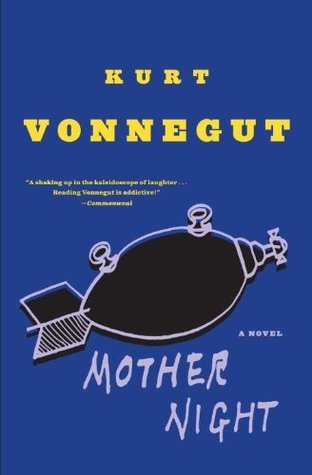Chapter 43: St. George and the Dragon …
byIn Chapter 43 of Mother Night, the narrator reflects on the transformed state of his attic, which now serves as a makeshift tent. The door to the attic is missing, and a crude sign declaring, “Nobody and nothing inside,” adds to the eerie, abandoned feeling. Inside, the dim light filtering through the broken windows casts long shadows across the room. Shattered panes are filled with scraps of paper and rags, enhancing the desolate, oppressive atmosphere of the space. The sense of neglect and isolation is palpable, as the room feels like a forgotten corner of the world, untouched by time but marred by its decay.
Looking out at a nearby park, the narrator is flooded with memories of childhood innocence, yearning for a moment of carefree joy. He wishes for someone to share in his playful thoughts, to join him in an innocent cry, perhaps in an attempt to connect with something pure and untainted. This longing for human connection is interrupted by the sound of rustling, and he is surprised to find Bernard B. O’Hare, a figure from his past, standing before him. O’Hare, dressed in a worn American Legion uniform and smelling of alcohol, seems to believe himself a hero, confronting the evils of the world. To O’Hare, the narrator appears as a dragon, a symbolic representation of all that he despises. The reunion between them is charged with tension, as O’Hare views this encounter as an inevitable reckoning, a fated confrontation between the two of them.
O’Hare reflects on his life after the war, expressing his disillusionment with the shattered dreams that had once guided him. He talks about his life’s disappointments, recounting his mundane jobs, from diaper services to driving frozen custard trucks. His words reveal his deep confusion and frustration, questioning the meaning of life and where he fits within it. The narrator listens with a mix of sympathy and caution, understanding the futility in O’Hare’s choices but wary of his unpredictable behavior. O’Hare’s anger and bitterness seem to be festering, and the narrator suspects that he may be carrying a weapon, heightening the tension between them. The fragile balance of their interaction teeters on the edge as both men grapple with their respective pasts and what they have become.
As the conversation shifts, O’Hare’s bravado crumbles, and he accuses the narrator of being “pure evil.” This accusation marks a critical turning point in their encounter, as it triggers a physical confrontation. The narrator, with fire-tongs in hand, prepares to defend himself against O’Hare’s looming aggression. In a swift move, the narrator incapacitates O’Hare, leaving him crumpled and humiliated on the floor. The expectation that O’Hare had of easily overpowering the narrator proves to be misguided. This moment of vulnerability, in which O’Hare faces defeat, highlights the fragility of his self-image as a righteous crusader. After throwing O’Hare out, the narrator is left to reflect on the complex nature of hatred and evil, suggesting that true evil is rooted in mankind’s relentless desire to hate. Often, this hatred is fueled by a delusion of moral superiority, which distorts human judgment and actions.
The chapter concludes with O’Hare, now defeated, throwing hollow threats at the narrator, but these threats are easily dismissed. The narrator’s calm dismissal underscores the cyclical nature of hatred and violence, revealing how futile and self-destructive these emotions can be. This encounter between the two men delves into profound themes of identity, morality, and the harsh realities of human nature. It reflects the internal conflicts that each person faces, including disillusionment, confusion, and the complexity of good and evil. Through this intense confrontation, the chapter highlights the destructive power of hate, the human desire for righteousness, and the inevitable consequences of these emotions when left unchecked.

